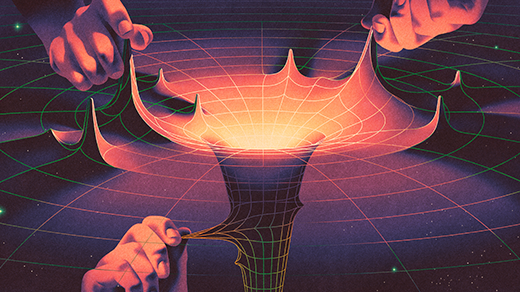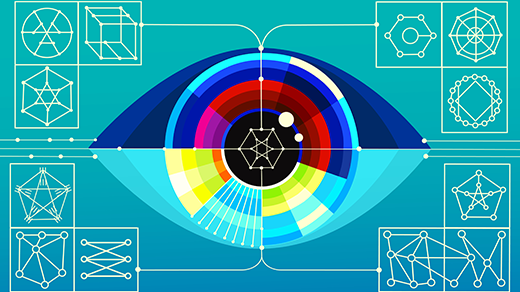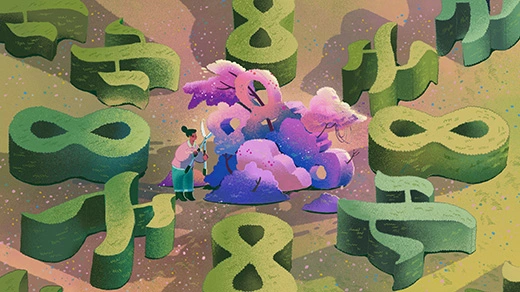What's up in
Mathematics
Latest Articles
New Physics-Inspired Proof Probes the Borders of Disorder
For decades, mathematicians have struggled to understand matrices that reflect both order and randomness, like those that model semiconductors. A new method could change that.
At 17, Hannah Cairo Solved a Major Math Mystery
After finding the homeschooling life confining, the teen petitioned her way into a graduate class at Berkeley, where she ended up disproving a 40-year-old conjecture.
Why the Key to a Mathematical Life is Collaboration
Fan Chung, who has an Erdős number of 1, discusses the importance of connection — both human and mathematical.
A New Geometry for Einstein’s Theory of Relativity
A team of mathematicians based in Vienna is developing tools to extend the scope of general relativity.
New Sphere-Packing Record Stems From an Unexpected Source
After just a few months of work, a complete newcomer to the world of sphere packing has solved one of its biggest open problems.
How Does Graph Theory Shape Our World?
Maria Chudnovsky reflects on her journey in graph theory, her groundbreaking solution to the long-standing perfect graph problem, and the unexpected ways this abstract field intersects with everyday life.
A New Pyramid-Like Shape Always Lands the Same Side Up
A tetrahedron is the simplest Platonic solid. Mathematicians have now made one that’s stable only on one side, confirming a decades-old conjecture.
Is Mathematics Mostly Chaos or Mostly Order?
Two new notions of infinity challenge a long-standing plan to define the mathematical universe.
Epic Effort to Ground Physics in Math Opens Up the Secrets of Time
By mathematically proving how individual molecules create the complex motion of fluids, three mathematicians have illuminated why time can’t flow in reverse.








